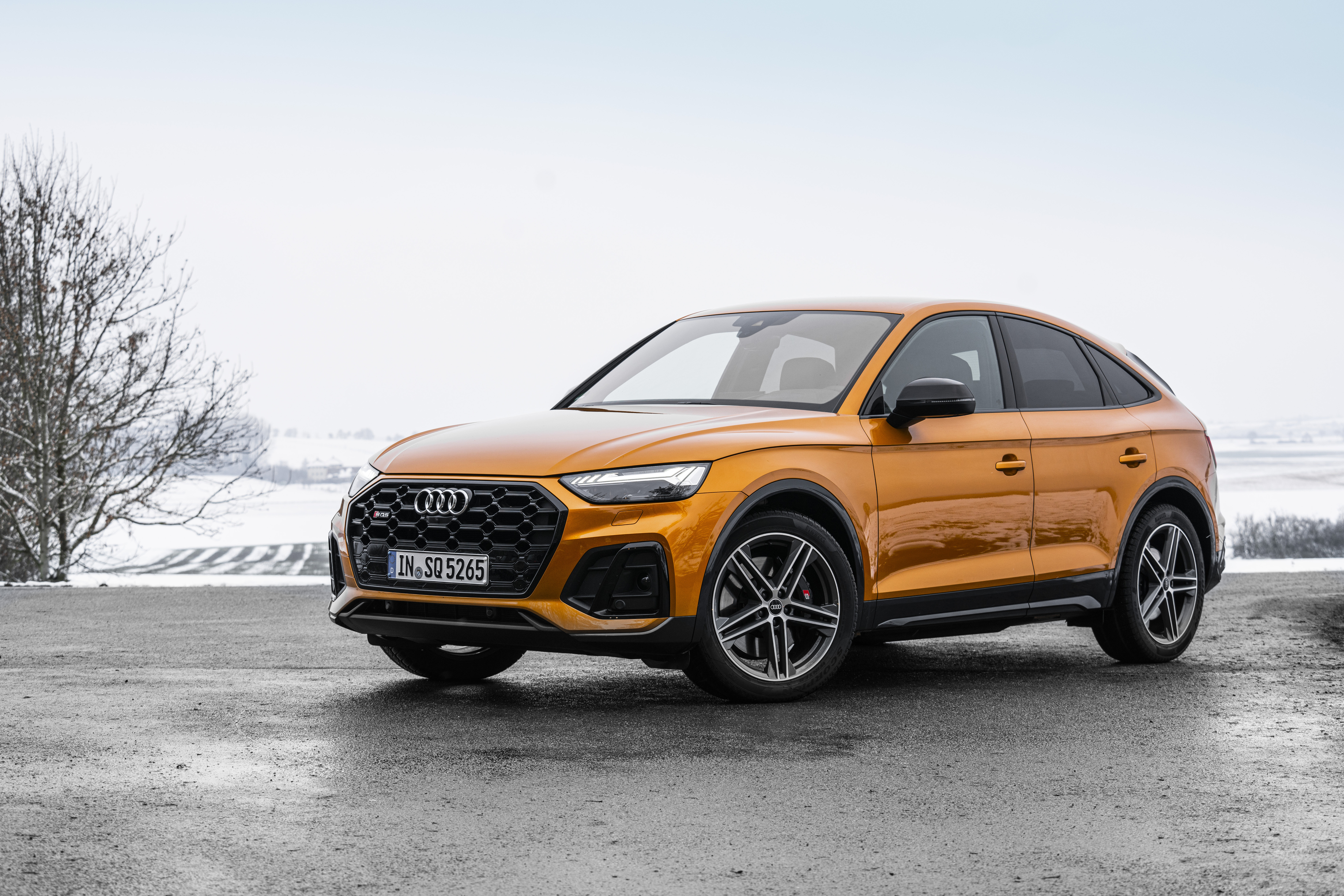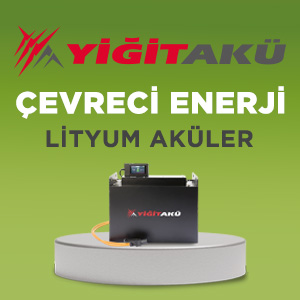
The Audi Q5 Sportback and the Audi SQ5 Sportback TDI
Following the Q3 Sportback and the e-tron Sportback, Audi now presents its third crossover utility vehicle, or CUV: the Q5 Sportback. This coupé with dynamic lines addresses customers who appreciate not just an expressive design and technical innovation but also a sporty character and a high level of everyday usability. Topping the line is the SQ5 Sportback TDI. Its three-liter TDI offers concentrated power of 251 kW (341 PS) and 700 Nm (516.3 lb-ft) of torque.
The Audi Q5 Sportback** exudes a powerful presence as is typical for the Q models from Audi. Large air inlets flank the octagonal Singleframe. The headlights with their distinctive daytime running light signature feature LED or optional Matrix LED technology. The continuous, elegantly sweeping shoulder line emphasizes the wheels and with them the quattro all-wheel drive. The side sill trim on the doors imbues the CUV with stability and robustness. The greenhouse extends low over the body and begins its downward slope early so that the third side window tapers sharply to the rear. The starkly sloped rear window and the seemingly highmounted rear bumper give the Q5 Sportback** a dynamic and powerful appearance.

Innovative: rear lights with digital OLED technology
Audi offers the rear lights featuring innovative digital OLED technology upon request. Each light includes three organic light-emitting diodes, which radiate an especially homogeneous red light. Each LED is divided into six segments, which can be controlled individually. Customers can select from three rear light signatures when ordering their vehicle, each of which includes a dynamic coming and leaving home lighting scenario. An additional sporty graphic is displayed when “dynamic” mode is chosen in the Audi drive select system. If another vehicle approaches the stationary Q5 Sportback** from the rear to within less than two meters, all OLED segments illuminate, providing proximity detection. The prerequisite for this function is that the car has one of the tow assistance systems – either Adaptive Cruise Control or Active Lane Assist – on board.
Large selection: colors and materials
Audi offers the new crossover utility vehicle in the “advanced” and “S line” exterior lines. Differences lie in the Singleframe, the side air inlets and in particular the rear bumper. There are 12 paint finishes and a variety of trims for the add-on parts to choose from, including the black styling package and both full and contrasting paint finishes. At 4.69 m (15.4 ft), the Q5 Sportback** is seven millimeters (0.3 in) longer than its sister model, the Q5**. It shares the same height (1.66 m [5.4 ft]) and width (1.89 m [6.2 ft]), but at 0.30 the drag also turns out lower.
The long wheelbase of 2.82 meters (9.3 ft) provides ample room on board. With its horizontal lines, the interior is clean and airy. The “design selection” and “S line” interior lines each give it an even more elegant or sporty appearance. They come in a wide selection of colors and upholstery materials, including top-quality fine Nappa leather. The “design selection” line includes the ambient lighting package plus – its lighting effects subtly bring out the typical Audi manufacturing finish.
Flexible space configuration: rear seat bench plus
The luggage compartment has a volume of 510 l (18.01 cu ft), which increases to 1480 l (52.3 cu ft) when loaded to the roof and with the rear seats folded down. Audi also offers the newest member of the family with the optional rear seat bench plus, which can be shifted laterally and has adjustable seat back angles. This expands the volume of the luggage compartment in the base configuration by up to 60 l (2.1 cu ft) – on the other hand, it offers enhanced comfort for the rear-seat passengers when the seat back and seating surface are set all the way back. The storage and luggage compartment package is also available as an option. A power tailgate is standard. In combination with the optional convenience key, it can be opened with a simple foot gesture.
The SUV in the guise of a coupé shines with a number of additional practical qualities. With its 150 kW (204 PS) 2.0 TDI engine, it can tow trailers with a total weight of up to 2.4 metric tons (braked, 12 percent gradient). Roof rails are available as an option. Hill descent control ensures safety when driving on steep slopes.
More ground clearance off-road: the adaptive air suspension
Thanks to its tight setup, the standard sport suspension offers direct contact with the road. Audi also offers an alternative suspension with controlled dampers or the versatile and comfortable adaptive air suspension. It adjusts the ride height over a wide range of 60 mm (2.4 in). The ground clearance can be increased by as much as 45 mm (1.8 in) when driving on unpaved roads, while the body is lowered by 15 mm (0.6 in) when driving fast. This reduces drag while increasing efficiency at the same time.
The vehicle’s stability also benefits from its low center of gravity. For convenient loading, the rear body can be lowered 55 mm (2.2 in) when the vehicle is stationary.
The optional dynamic steering varies the steering ratio and power assist as a function of the driving speed. A direct ratio and greater power assistance makes the car easy to handle when driving slowly, while at higher speeds the more indirect ratio has a positive effect on straightline stability. The wheel diameters range from 18 to 21 inches, while there is a choice of no fewer than 21 wheel designs.
The engine range at launch: two TDI engines and one TFSI
The Audi Q5 Sportback** will be launched on the market in Europe with three engine versions – two TDI engines and one TFSI. Their power output ranges from 150 kW (204 PS) to 210 kW (286 PS). All the engines come in under the thresholds set in the new Euro 6d ISC-FCM AP emission standard, which places strict limits on nitrogen oxide emissions in road tests.
A 2.0 TDI engine is responsible for propulsion in the Q5 Sportback 40 TDI quattro (combined fuel consumption in l/100 km (US mpg): 5.5–5.3 (42.8–44.4); combined CO2 emissions in g/km (g/mi): 144–140 (231.7–225.3). It produces 150 kW (204 PS ) and 400 Nm (295.0 lb-ft) of torque, and accelerates the large CUV from 0 to 100 km/h (62.1 mph) in 7.6 seconds on its way to a top speed of 222 km/h (137.9 mph). A 12 V mild hybrid system (MHEV) increases the efficiency. Its belt-driven starter-alternator can recover energy when decelerating and store it in a compact lithium-ion battery. What’s more, the MHEV system allows coasting with the engine off, while the start-stop range already begins at a speed of 22 km/h (13.7 mph). A second variant of the 2.0 TDI will follow after the market launch.
A seven-speed S tronic and the efficient quattro drive with ultra technology provide the power transmission for the four-cylinder diesel engine. In normal driving conditions, it directs the torque exclusively to the front wheels. The moment all-wheel drive is required, two clutches instantly activate the rear axle, even predictively in many situations.





